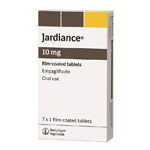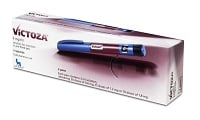 Top-line data on Eli Lilly ($LLY) and Boehringer Ingelheim's SGLT2 med, Jardiance, is out, showing the drug cut the combined risk of heart attack, stroke and death from cardiovascular causes by 14% in high-risk Type 2 diabetes patients. But what does it mean for the ultracompetitive diabetes landscape?
Top-line data on Eli Lilly ($LLY) and Boehringer Ingelheim's SGLT2 med, Jardiance, is out, showing the drug cut the combined risk of heart attack, stroke and death from cardiovascular causes by 14% in high-risk Type 2 diabetes patients. But what does it mean for the ultracompetitive diabetes landscape?
Potentially a lot of things, according to analysts. First, the implications for the rest of the SGLT2 class, which comprises Johnson & Johnson's ($JNJ) Invokana and AstraZeneca's ($AZN) Farxiga in addition to Jardiance. Given the shared mechanism of action across the trio, doctors "will likely assume that the effect of Jardiance is a class effect," giving Jardiance's rivals a boost in the process, Evercore ISI analyst Mark Schoenebaum wrote in a Friday note to investors.
Leerink Partners analyst Seamus Fernandez thinks the magnitude of the survival benefit--Jardiance reduced CV death by 38% and all-cause mortality by 32%--will also lead to guideline changes that bring the med and its peers much earlier in lines of diabetes therapy.
But for now, Jardiance is the only one that could add the CV benefit to its label--provided the FDA approves the update, of course. And that means sales reps from Lilly and BI will "be able to more easily speak to it and to the fact that if the doctors want to be intellectually honest and practice evidence-based medicine they should really be prescribing Jardiance," Schoenebaum pointed out. Fernandez agreed, predicting Jardiance would "take the lion's share of the upside."
Another key will be how the warring pharmas navigate the payer landscape, Bernstein analyst Tim Anderson wrote to clients Thursday. J&J, which currently boasts "formulary dominance," may be able to preserve its position by offering rebates and riding on the coattails of its fellow SGLT2 med's success. AstraZeneca, on the other hand, "to some degree … gets left out in the cold," he wrote.
The data also stands to affect other classes of diabetes drugs--most notably DPP-4 inhibitors, led by Merck & Co. ($MRK) behemoth Januvia--that haven't turned up a cardiac benefit in post-marketing examinations. While analysts have different opinions on just how much DPP-4s might suffer now that SGLT2s can tout a CV edge, they agree on one thing: It's bad news.
Schoenebaum, for his part, expects to see the SGLT2 class overtake the DPP-4s in the next three to six years. Peak sales estimates for Jardiance currently sit below $2 billion, while Januvia is a $6 billion seller, but "these could invert," he forecast.
Anderson, though, was more cautious. "Paradigm shifts in primary care simply take time, and patients who currently use medicines like DPP4-s are unlikely to switch in droves," he warned. Instead, the "low-hanging fruit" will be new patients starting on therapy, who make up "a smaller slice of the pie in most chronic diseases." Still, he took his 2020 Januvia sales predictions down a notch, adjusting them from $7.8 billion to $6 billion.
 And what about GLP-1 drugs, like Novo Nordisk's ($NVO) Victoza? They may be preparing for their own moment in the sun, Fernandez wrote. The next diabetes CV outcomes trial to report will be Novo's LEADER study for Victoza, with top-line results expected late this year or early next. If that trial shows a statistically significant reduction in CV outcomes, physicians foresee a serious uptick GLP-1 use, as well as SGLT2 use. And if they don't?
And what about GLP-1 drugs, like Novo Nordisk's ($NVO) Victoza? They may be preparing for their own moment in the sun, Fernandez wrote. The next diabetes CV outcomes trial to report will be Novo's LEADER study for Victoza, with top-line results expected late this year or early next. If that trial shows a statistically significant reduction in CV outcomes, physicians foresee a serious uptick GLP-1 use, as well as SGLT2 use. And if they don't?
"We expect moderately negative impact to overall GLP-1 sales," he said.
Special Report: Top 10 best-selling diabetes drugs of 2013